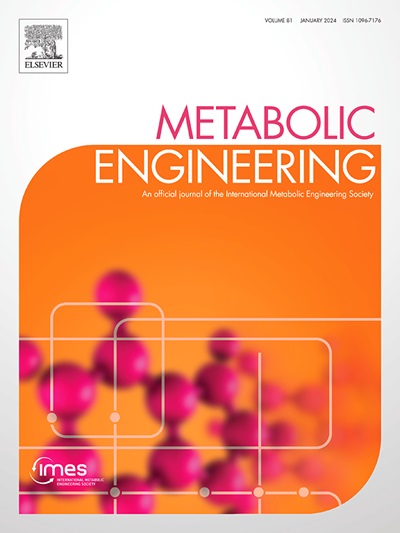The halo of future bio-industry based on engineering Halomonas
IF 6.8
1区 生物学
Q1 BIOTECHNOLOGY & APPLIED MICROBIOLOGY
引用次数: 0
Abstract
The utilization of microorganisms to transform biomass into biofuels and biochemicals presents a viable and competitive alternative to conventional petroleum refining processes. Halomonas species are salt-tolerant and alkaliphilic, endowed with various beneficial properties rendering them as contamination resistant platforms for industrial biotechnology, facilitating the commercial-scale production of valuable bioproducts. Here we summarized the metabolic and genomic engineering approaches, as well as the biochemical products synthesized by Halomonas. Methods were presented for expanding substrates utilization in Halomonas to enhance its capabilities as a robust workhorse for bioproducts. In addition, we briefly reviewed the Next Generation Industrial Biotechnology (NGIB) based on Halomonas for open and continuous fermentation. In particular, we proposed the industrial attempts from Halomonas chassis and the rising prospects and essential strategies to enable the successful development of Halomonas as microbial NGIB manufacturing platforms.
基于工程单胞菌的未来生物产业的光环。
利用微生物将生物质转化为生物燃料和生物化学物质是一种可行的、有竞争力的替代传统石油精炼工艺的方法。盐单胞菌是耐盐和亲碱的,具有各种有益的特性,使它们成为工业生物技术的抗污染平台,促进了有价值生物产品的商业规模生产。本文综述了盐单胞菌的代谢和基因组工程方法,以及盐单胞菌合成的生化产物。提出了扩大盐单胞菌底物利用的方法,以提高其作为生物制品的强大主力的能力。此外,我们还简要介绍了以盐单胞菌为基础的开放式和连续发酵的下一代工业生物技术(NGIB)。特别提出了从盐单胞菌底盘出发的工业尝试,以及使盐单胞菌作为微生物NGIB制造平台成功发展的前景和必要策略。
本文章由计算机程序翻译,如有差异,请以英文原文为准。
求助全文
约1分钟内获得全文
求助全文
来源期刊

Metabolic engineering
工程技术-生物工程与应用微生物
CiteScore
15.60
自引率
6.00%
发文量
140
审稿时长
44 days
期刊介绍:
Metabolic Engineering (MBE) is a journal that focuses on publishing original research papers on the directed modulation of metabolic pathways for metabolite overproduction or the enhancement of cellular properties. It welcomes papers that describe the engineering of native pathways and the synthesis of heterologous pathways to convert microorganisms into microbial cell factories. The journal covers experimental, computational, and modeling approaches for understanding metabolic pathways and manipulating them through genetic, media, or environmental means. Effective exploration of metabolic pathways necessitates the use of molecular biology and biochemistry methods, as well as engineering techniques for modeling and data analysis. MBE serves as a platform for interdisciplinary research in fields such as biochemistry, molecular biology, applied microbiology, cellular physiology, cellular nutrition in health and disease, and biochemical engineering. The journal publishes various types of papers, including original research papers and review papers. It is indexed and abstracted in databases such as Scopus, Embase, EMBiology, Current Contents - Life Sciences and Clinical Medicine, Science Citation Index, PubMed/Medline, CAS and Biotechnology Citation Index.
 求助内容:
求助内容: 应助结果提醒方式:
应助结果提醒方式:


